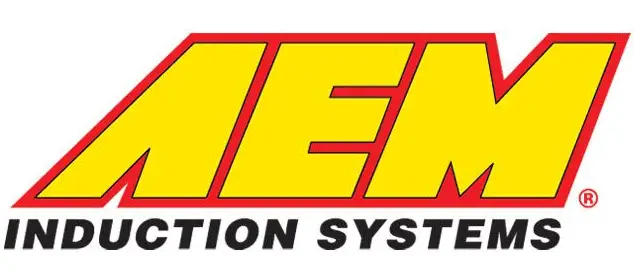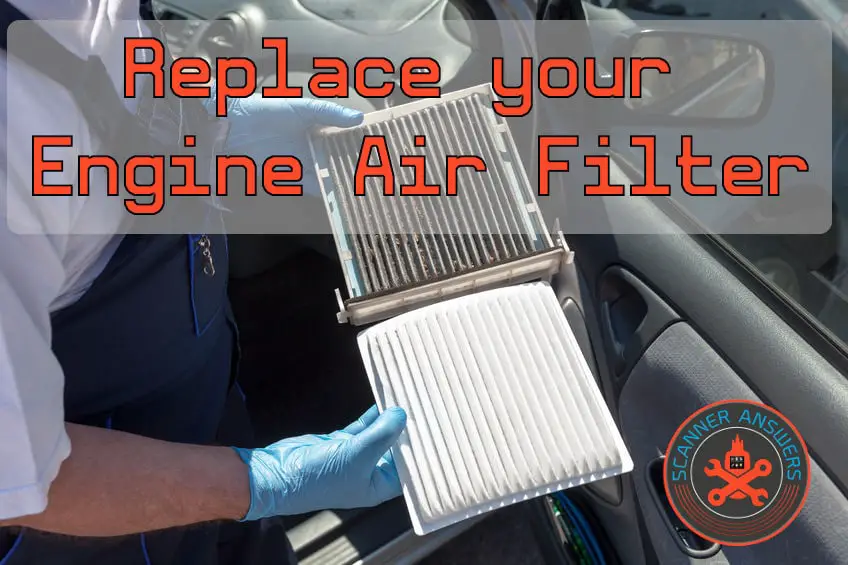
Is it Time to Replace Your Engine Air Filter?
Hey there I’m Vince and today we’re talking about how to choose the best car air filter brand. Choosing the right air filter feels like choosing a treat at the candy store. It is hard to pinpoint which is the best. Most of the time, it seems all brands are the best in one way or another.
I guess the best way to answer which is the best car air filter brand will all boil down to two things:
- The type of vehicle
- Intended application (performance, daily driving, off roading?)
Look at it this way: installing an after-market engine air filter will likely allow you to feel a power difference vs a stock air filter. However, for tuned motors, simply upgrading to a better air filter might not be enough to get the amount of air needed to reach peak HP numbers.
In the case of turbocharged or supercharged engines (which require totally massive amounts of intake air at full spin), this will mean replacing the entire intake system. For high-performance racing applications, only a cold air intake with a larger and higher flow air filter is the best solution.
And this is where the confusion begins. In this article, I will not only discuss the best engine air filter brands but we’ll take a closer look at the types of air filter and how changing a simple component will translate to higher savings, better performance, and a happier driver.
The Importance of the Engine Air Filter
The modern internal combustion motor is basically a large air pump. It sucks, compresses, burns, and expels hot gasses as a result of igniting the fuel and air mixture.
Can you imagine the motor compressing air with larger molecules of dust, dirt, or debris? It will spell the end for the engine as dirty or contaminated air can severely damage critical engine parts. While this may sound OCD by nature, it’s really not. There’s a reason why the manufacturer included an air filter in the engine schematics. Burning cleaner air is a necessity for a smoother-revving engine.
Dirty air or removing the air filter might not exactly inflict harm, but it can lead to faster oil degradation. All the dirt and debris that survives the combustion process will most likely be absorbed by the engine oil. As more contaminants are sucked inside the combustion chamber, the dirtier the oil will get. Even the intake valves will receive a nice accumulation of dirt and deposits that will, in effect, severely limit the amount of intake air. Overall, this leads to poor engine performance and bad fuel economy.
What are the symptoms of a dirty or clogged air filter?
There are many but 5 of the most common symptoms of a bad air filter are summarized as:
- Persistent misfiring of the engine
- Poor performance
- Black smoke in the exhaust
- Smell of unburned gas upon starting the engine
- Black deposits on the air filter
1. Persistent misfiring of the engine
In the event of a misfire, the first things to check should be the spark plugs, fuel filters, and the air filter. Although I have to admit that in my many years of owning different cars, most misfiring issues can be attributed to bad spark plugs or faulty injectors.
In older cars with carburetors, dirty air filters are a big no-no. This is the reason why it is important to periodically clean the air filter using compressed air, or replace the filter itself every 10,000 miles or every year. But in modern cars, a dirty air filter might not exactly cause an engine misfire (but it happens in isolated cases with severely clogged or neglected air filters), but it will lead to faster engine deterioration and a noticeable loss in acceleration. It can even cause engine seizure.
2. Poor performance
Like I mentioned above, the engine is a huge air pump. Anything that impedes the rushing flow of air will significantly affect performance. If the air filter is clogged, the mass air flow sensor inside the intake housing might likely trigger a check engine light. If it doesn’t, you will most likely sluggish acceleration, idling problems, and unusual engine noises at idle. The engine will wheeze and snort as if gulping for some much needed air.
3. Black smoke in the exhaust
A serious lack of air supply is bad news for the engine. In modern cars, the engine CPU will compensate for the lack of intake air by injecting more fuel to produce power. But with a higher fuel-to-air ratio, this means some of the fuel will be left unburned, hence resulting in black smoke emanating from the vehicle exhaust. This problem is more evident during hard acceleration.
4. The smell of unburned gas upon starting the engine
Not enough air simply means not enough oxygen is entering the motor. If there isn’t enough air (even if the engine tried), the unburnt fuel will simply pass through the exhaust system, which will give your vehicle a gassy smell. The problem will be more evident during cold starts or during idling speeds.
5. Black deposits on the air filter
When was the last time you checked the air filter in your vehicle? If your answer is once a year or never, maybe it’s time to check it sooner rather than later. The stock paper element air filter is as white as snow. As the air filter ages, the white parts will slowly turn to dark brown or black. But as long as you can still see traces of white paper, you’re in the clear, but the air filter might need to cleaned and de-clogged just to be sure.
But if you pull out the air filter and all you see is a dirty, black, and ugly mess, there is no use cleaning it (unless your vehicle is equipped with a reusable air filter). Do your engine a favor and replace the air filter right away.
When You Should Replace Your Car Air Filter
Don’t wait until you experience one of the symptoms of a bad filter to replace it! Most vehicle’s air filters should be replaced every 12,000 – 15,000 miles (or 1 year) unless you’re using an after-market brand like K&N in which case it can last up to 150,000 miles but needs to be recharged every 50,000 or so miles.
How much is a new air filter for your vehicle?
This depends on if you’re willing to do the work yourself. Most stock car engine air filters can be replaced for $10-$20 if you do the work yourself. But if you take it to a mechanic, you’re likely to pay a higher premium in the $30-$50 dollar range.
How to replace an engine air filter
If you want to save a couple bucks and replace the engine air filter yourself, here’s some tips (video and screen shots from the HumbleMechanic. Check out his awesome work on Youtube.)
- Locate the air filter. You can check out your owners manual if you don’t know where it is, but it usually looks like box with a tube leading to the engine
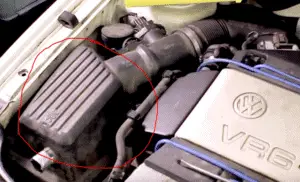
- Pop up the metal clips holding the filter box shut. This is best done with a screwdriver.
- Remove and inspect the old air filter. Is there dirt and grime on there? Yeah it needs to be replaced!
- Install the new filter. Wow, look how much cleaner that filter is! Your engine with thank you now.
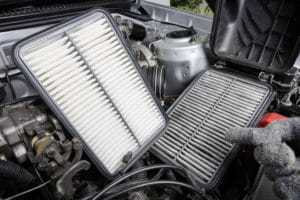
- Reinstall the airbox and make sure it’s sealed snapped down securely.
- Congratulations! You’ve just replaced your engine air filter and save yourself $10 or $20 bucks! While you’re at it, maybe you should detail your engine bay.
Watch the full video guide here:
How do I clean a dirty engine air filter?
In terms of the stock paper filter, it can only be cleaned using pressurized air. Take the filter off the airbox and blow some pressurized air to loosen and remove the dust/dirt. Most of the time you’re better off just throwing out the old one and installing a new engine air filter.
If your vehicle is equipped with a washable air filter (like K&N), it’s easiest to pick up a filter recharge kit at your local autoparts store.
- Remove the air filter
- Soak the filter element in all-purpose cleaner or a commercially-available air filter cleaner.
- Spray cleaner on the air filter and allow to soak for 5 to 10 minutes.
- Before the cleaner gets a chance to dry, wash the air filter with plain water. Depending on the condition of the air filter, you will need to repeat the procedure until a fresh surface is revealed.
- Allow the air filter to dry completely. Some people make the mistake of applying oil when the filter is still wet. This will result in poor filtration and poorer engine performance.
- Apply oil as directed. Don’t apply to much oil!
- Let the air filter sit for at least 20 minutes before reinstalling.
The Best Car Air Filter Brands
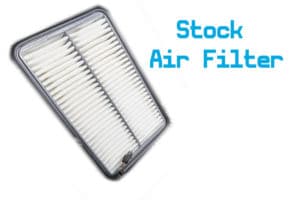
1. OEM Paper Air Filter
This might be a bit controversial to many people, but for most vehicles I prefer to keep the stock OEM paper air filter installed. Unless you’ve got some heavy mods on your ride (turbo, exhaust, CAI, etc), you’re not going to notice a large power increase with an aftermarket engine air filter. In fact, some people have found that popular air filters will let in more dirt in your engine. I don’t have scientific proof for this, but here’s some more thoughts on the matter – Bob the oil guy – Tacoma World – AnandTech
- High-Flow are filters will likely NOT add horsepower. All that these fancy filters do is cost money and claim to improve air flow. Not that improved airflow is bad, but if you’re vehicle is stock, you’re not going to gain any power.
- High-Flow filters are more susceptible to letting in more dirt. Do some research on this one, but I’ve known a few people who’ve had bad experiences with “popular” aftermarket filters. One of my friends dropped in a filter in high 2008 Yamaha R1 and about a year later the engine blew up – maybe it was a coincidence – I’ve also experienced putting in an aftermarket filter and getting a CEL flashing. This may have been from too much oil applied. What I know if that I’ve seen some added headache from these filters.
With that said, if you add a Cold-Air-Intake (CAI) you’ll likely have to use one of the popular engine air filters. If you add a CAI and exhaust system, you’ll likely see some HP gains…. But whenever you see companies advertising 10-15hp gains by simply changing the air filter, be wary.
For most vehicles, just stick with OEM paper filters to avoid issue.
2. K&N High-Flow Air Filters
If you were to ask your car buddies, “What are the best air filters for cars,” the most likely response you’ll get is; “K&N bro!!!!11!!”
There is something about the K&N brand when it comes to performance and OEM engine air filters. The company claims that their air filters are the last that your vehicle will ever need, which isn’t far from the truth.
So if you’ve got your heart on upgrading the air filter, there’s no other brand that has quite the reputataion as K&N. For their trusted name, I’ve added them to second place in this list of the best engine air filters.
K&N air filters are backed by a 10-year/million mile limited warranty. This is saying a lot for a quality product. Yes, you will have to pay more in order to enjoy the K&N experience, but you get what you pay for. K&N air filters are not simply replacement filters. The products are all designed to improve the air flow by up to 50% compared to the stock air filter. This also means better performance, more horsepower, and faster acceleration.
But if the air filter is designed to improve air flow, does this mean lesser filtration? Not so with K&N air filters. The company has been in business since 1969. They are the preferred choice of NASCAR and have worked their way into many other popular sports where peak engine performance is required.
K&N is so far ahead in the air filter game that other brands are collaborating with the K&N name in their own respective products.
If you’re into racing, then you’ve heard of the Baja 1000. But did you know that K&N filters are chosen by some of the racers? If there’s a type of race that can kill an air filter, this is it.
What makes the K&N superior is the higher-capacity filter media. It is composed of many layers of oiled cotton to provide 50% better flow. However, the filter media can last for up to 50,000-miles of hard driving before needing a recharge. Recharging the air filter means washing the filter media and re-applying oil to reveal a fresh surface.
Like I said, K&N air filters are not cheap. But since the air filter is designed to last the life of your vehicle, you won’t have to buy a new air filter every 5,000 or 10,000-miles. This means bigger savings in your pocket, especially if you rack up a lot of miles on the road.
Enthusiastic drivers should definitely take notice. If you own a basic subcompact such as a Chevrolet Spark, Toyota Yaris, Nissan Versa, or Mitsubishi Mirage, we all know those vehicles are not exactly designed to stir the loins. But by dropping in a K&N air filter that offers 50% better flow, it is easier to feel the noticeable improvement in performance.
It’s the same story if you’re the proud owner of a Mazda3, Honda Civic Type R, Genesis G70, or any type of vehicle. By improving the air flow, you can expect better performance.
If you are serious about knowing the best car filter brands, the K&N brand should be on top of your list.
3. AEM Dryflow Air Filters
The Dryflow series is developed in collaboration with K&N. Even AEM is proud to say that K&N is the inventor of high-flow air filters. However, AEM gave their Dryflow air filters a different spin.
As the name suggests, AEM Dryflow Air Filters have a dry filtering media. It doesn’t contain oil, and there’s no need to re-oil the air filter after cleaning. Similar to the K&N air filter, the AEM Dryflow can be used and abused for up to 50,000-miles in between cleanings. But if you purchase a Dryflow air filter together with a matching AEM air intake system, the air filter can last for up to 100,000-miles before requiring a cleaning session.
What’s this mean for you? If you’ve experienced issues with K&N filters in the past, it’s likely because they contain an oil that needs to constantly be re-applied. And sometimes if you get too much oil on the filter, it will clog the MAF (mass air flow) and illuminate the check engine light. Not fun.
Check engine light on? Grab an Android or iPhone OBD2 scanner and find out why!
The AEM Dryflow is constructed using three-dimensional cotton medium. It utilizes depth-loading and screen wires to enhance airflow without sacrificing the filtration capabilities of the air filter.
Should you get a K&N or AEM engine filter?
It really depends on the type of vehicle and the intended application. In my humble opinion, I prefer the AEM Dryflow for stock vehicles.
The AEM costs less than the K&N, but not by much. The real cost-saving measure will come in terms of filter maintenance. Since the AEM Dryflow is a dry element, it doesn’t need to be re-oiled, which means you don’t need anything else than an all-purpose cleaner or just plain water to clean the filter. Because the AEM is a dry engine filter, you don’t have to worry about applying too much oil and causing engine failure.
Makes sense, right?
However, if high-performance or extreme off-road use is your forte, I prefer the K&N oiled filter. In terms of filtration, oiled filters are usually the best. However, since the air filter is basically soaked in oil, they have a tendency of gumming up if you constantly drive in severely dusty conditions. As the air filter gums up, oiled filters have a tendency to reduce the airflow.
Both brands are the best in the business of car air filters. It all boils down to price and maintenance. If you don’t mind the added cost of buying oil (that will degrade when not stored properly) to recharge your air filter, or if you have an off-road truck or SUV that does some serious duty in the dirt, you can place your bets on K&N.
For normal cars in normal day-to-day driving, I prefer the AEM Dryflow.
The Runners Up
3. Injen Air Filters
The Injen brand has an interesting story. Injen founder Ron Delgado developed a multi-axis polishing machine in 1988. The machine can polish on all types of curved surfaces. During that time, polishing machines were strictly delegated to flat surfaces.
As Delgado perfected the art of polishing, he drew his attention to change the aftermarket air induction industry. He launched Injen in 1991. Car enthusiasts quickly took notice of Injen intake kits. Back then, Injen was one of the few that offered better performance without triggering the check engine light on the dash. If you happened to use cold air intakes back in the day, you’ll totally understand what this story means.
Injen high-performance air filters are designed for aftermarket air intake units, particularly Injen cold air intakes.
If you’re looking for a replacement for the stock air filter, it is better to stick with the K&N or the AEM. This is because the Injen is designed to be a Cold Air Intake system.
The Injen SP Series is regarded by many as the world’s first tuned intake system. The Injen RD Series is a proper cold air intake. And when I say proper, I mean the intake tube is relocated behind the front bumper. This allows the intake kit to ingest larger amounts of colder air.
If your vehicle is equipped with a cold air intake or aftermarket intake kit that seriously needs a new air filter, Injen air intakes are probably the safest and most economical bet. Injen high-performance air filters are constructed from eight layers of oiled cotton gauze. The filter housing is crafted from 100% polyurethane for lightness and durability. The air filter is also washable and reusable.
4. Airraid Air filters
Airraid Air Filters are handmade to offer better filtration and improved air flow. Airaid replacement air filters are engineered to reduce airflow restriction to offer superior performance over the stock paper filters.
There are two types of Airaid air filters.
- The SYNTHAMAX is a non-oiled filter media and comes with two layers of synthetic filtering materials. The SYNTHAMAX is perfect for everyday street driving. Best of all, it is also washable and reusable.
- On the other hand, the SYNTHAFLOW oiled filter media is crafted using multiple layers of synthetic and cotton media. This is the one to choose if your vehicle is constantly exposed to dry or dusty environments.
I first came across the Airaid brand in my old Mustang GT. The SYNTHAMAX is great if you want something that is better and more durable than the factory air filter. As I began adding go-fast performance mods, I upgraded to the Airaid SYNTHAFLOW and never looked back.
Airraid also manufactures air intake tubes and custom air intake components. If you’re on a tight budget, give Airaid air filters a try. Concerned about quality? Airaid air filters and air intakes are proudly made in the USA and come with a lifetime guarantee.
5. S&B Air Filters
S&B Air Filters are also a budget-oriented alternative that performs better than the stock paper filter in your vehicle. S&B air filters are manufactured using the finest cotton gauze to effectively trap dirt and particulates while improving the airflow. S&B air filters are also washable. However, you will need to re-oil the filter after washing.
The S&B brand is also home to cold air intake kits and particle separators. The air filters in particular are designed to boost horsepower and torque while also increasing fuel economy. If you’re the lucky driver of an American truck or muscle car, take a closer look at S&B air filters.
Does a cold air intake really work?

The success of a cold air intake kit will depend on two things:
- The location of the cold air intake – The point of a CAI is to deliver cold air to the engine. But if the intake system doesn’t relocate the filter to somewhere like behind the bumper, you’re not actually sucking in cold air.
- The higher flow of colder air – If you’re engine doesn’t need the extra air, then a CAI delivering more air isn’t going to help. It’s like hooking up a fire hydrant hose to your sink… the extra width of the hose isn’t going to let anymore water through the hose…
Does this sound familiar? Take a second look at the stock air intakes in your vehicle. If you will notice, the factory intakes are actually designed to suck colder air. However, the main difference is in the flow of intake air. The stock air box and paper air filter is designed to be restrictive by nature.
If you bought a cold air intake, you better make sure the unit is actually sucking in colder air. In some cases, relocating the air filter to a colder part of the engine bay (such as near the fenders or directly at the back of the front grille) is required. This is the reason why the best cold air intakes are equipped with heat shields. This will prevent heat from contaminating the temperature of the intake air as it is sucked by the cold air intake kit.
So if you bought a cold air intake kit that is designed to sit in the stock location, you better think twice. For all you know, the cold air intake might be sucking warmer air due to the absence of an air box or air hose. In this case, the engine might perform poorly despite the improved airflow.


